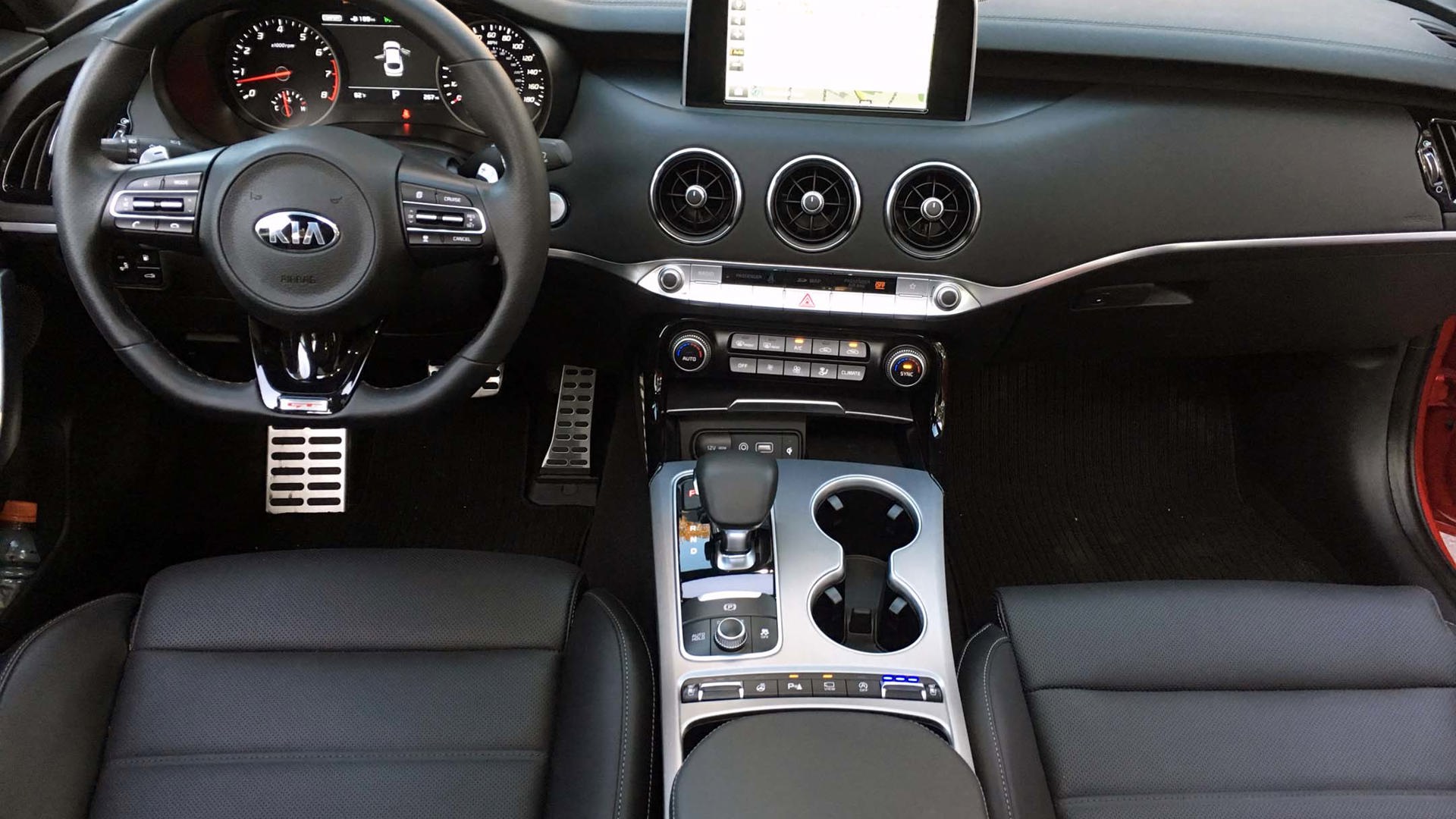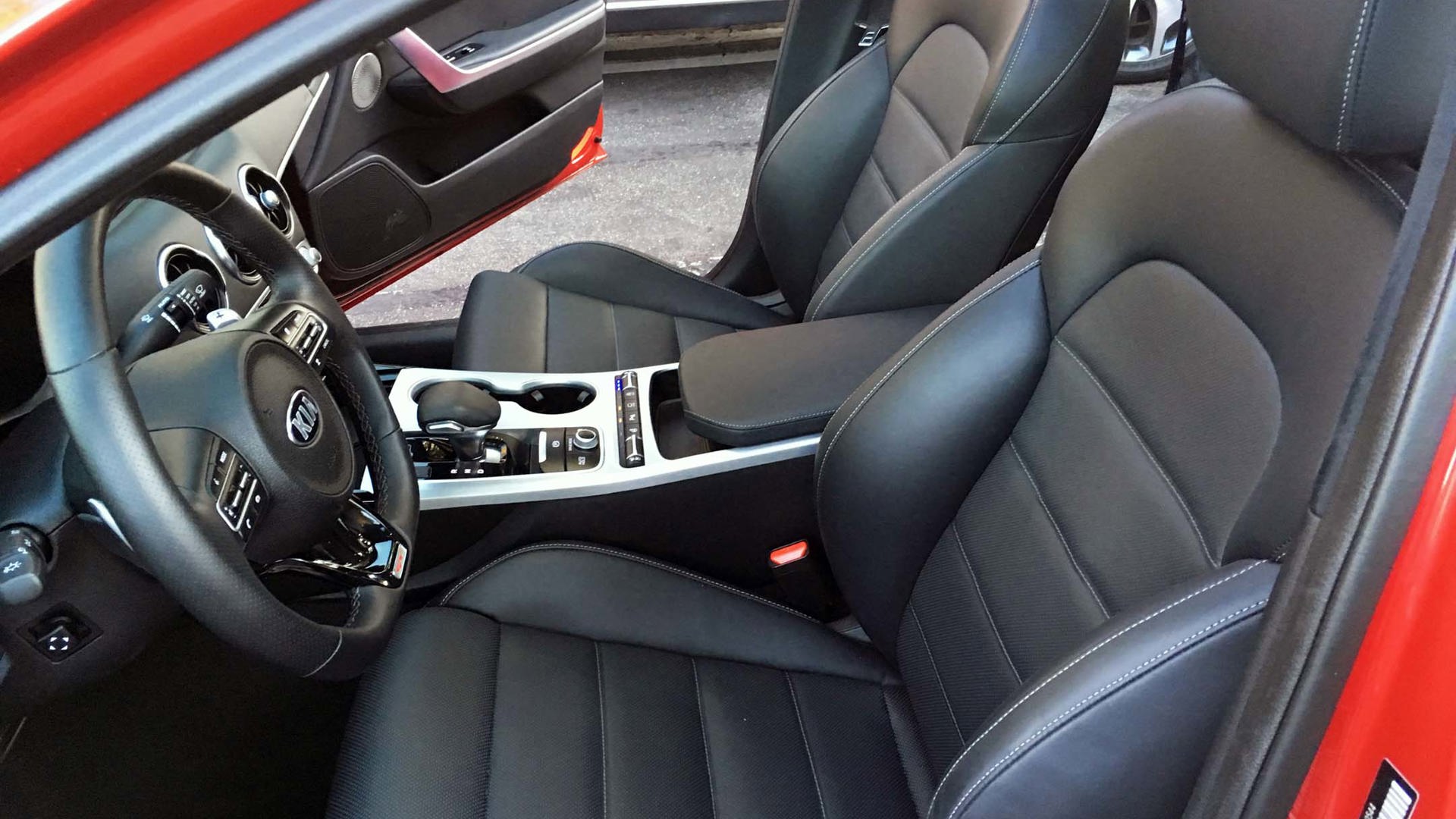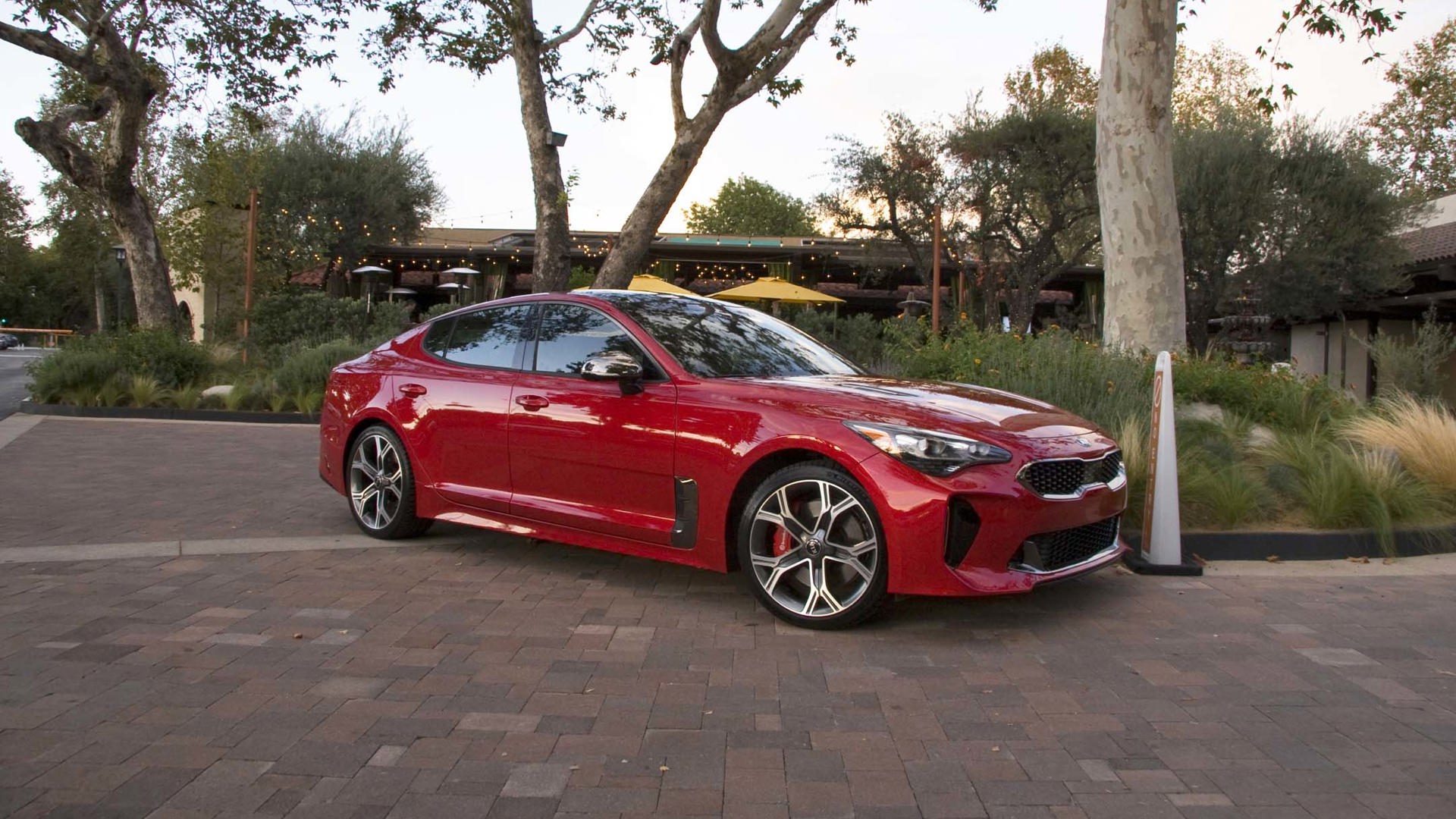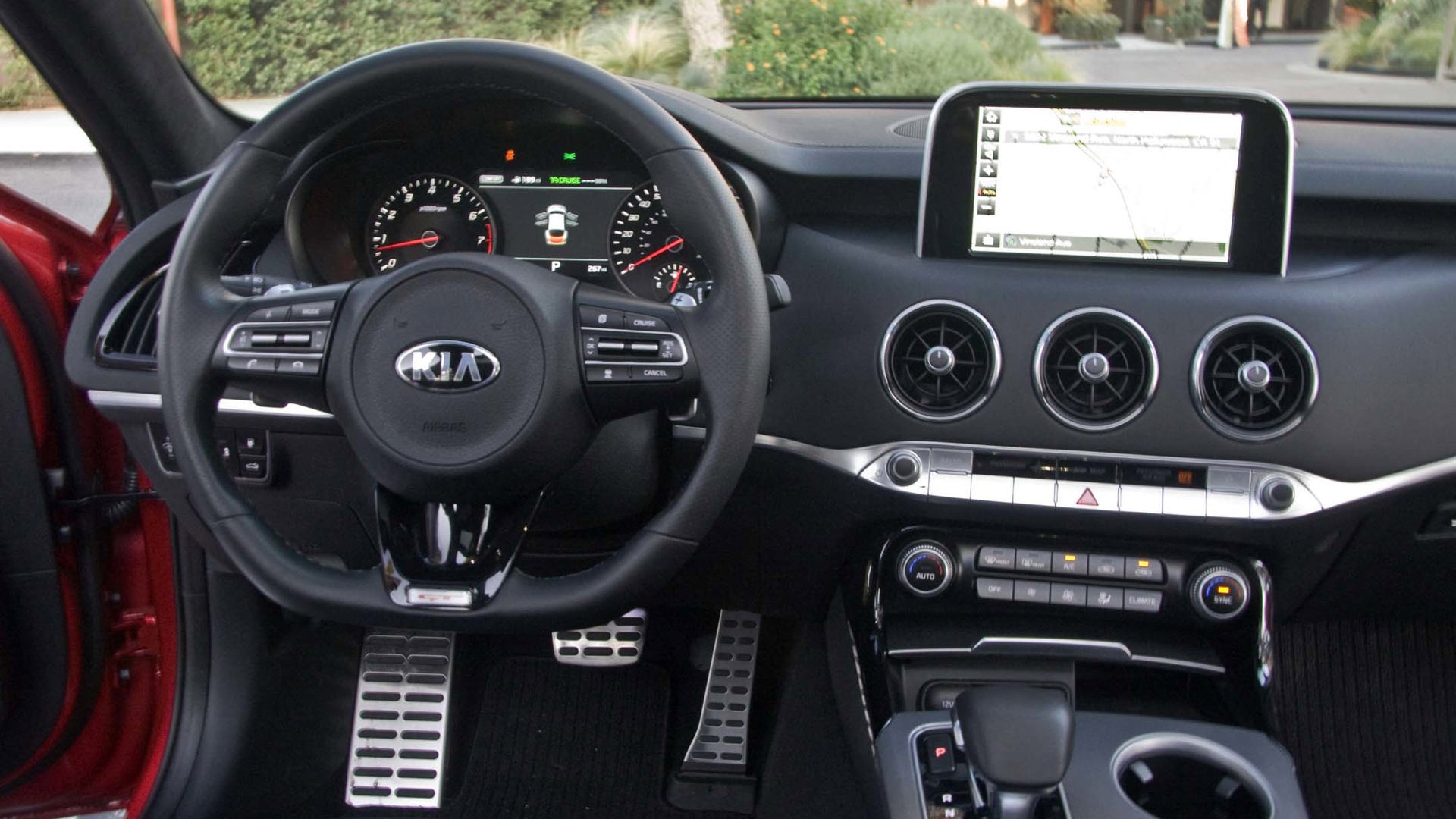LOS ANGELES, California – Take off the badge, hide its grille, and you could be forgiven for briefly mistaking Kia’s new Stinger for an Audi A7. The long, lithe profile and flowing roofline culminating in a neat, upswept rear decklid form a silhouette that’s remarkably similar to Audi’s lovely four-door coupe – not a bad comparison by any means.
It takes more than bravado and marketing to tackle the Germans in this arena, and any automaker daring to do so had better be prepared to deliver.
You’d probably also assume that the Stinger’s sleek proportions were the work of Peter Schreyer, the former Audi designer poached by Kia nearly a decade ago. But the coupe-like sedan was penned by Kia’s Frankfurt-based Gregory Guillaume, who was inspired by the glorious 1970s grand touring cars he loved as a boy in Paris. The long hood, short front overhang, and fastback profile are classic gran turismo design cues.
The days of being surprised by the quality of Korean design and engineering are far behind us. As the Japanese did before them, Korea’s automakers have aggressively fought their way up from the bottom to become top players on a global stage.
For the last ten years, Kia and sister company Hyundai have established themselves as top-notch producers of mainstream family vehicles: well-built affordable sedans, hatchbacks, and crossovers, distinguished by their high level of feature content and excellent warranties.
Yet nobody really expected they’d venture into a segment of decades-long domination by the crème de la crème of European driving sedans. It takes more than bravado and marketing to tackle the Germans in this arena, and any automaker daring to do so had better be prepared to deliver.
But according to early test reports from the Nürburgring – perhaps the most feared and respected strip of tarmac in racing – Kia did just that, delivering a sleek performance “four-door coupe” with the balance and agility to compete with Europe’s best.
They came well-equipped to do so, by luring away 32-year veteran of BMW M division, engineer Albert Biermann and challenging him to develop a car to rival the 4 Series Gran Coupe. A lofty goal indeed – but one that if successful, would establish Kia as not only a family car juggernaut, but also a purveyor of premium luxury saloons.
Evidently, Kia has enough faith in their “red car” as it was known in the development stage, to name the Audi S5, BMW 440i GC, BMW 640i GC, Porsche Panamera, and Lexus GS as their targeted competitors. Going strictly by the numbers, it succeeds – with more front and rear legroom than the Audi, BMWs or Porsche, cargo space second only to the Panamera, and with more horsepower and a greater top speed than any of those competitors.
But its ace-in-the-hole is its starting price, tens of thousands of dollars cheaper than most of its competitors. While other markets can opt for a base, rear-wheel-drive model powered by a 255 hp turbocharged four-cylinder, all cars for the Canadian market will be the V6-powered Stinger GT 3.3L AWD starting at $47,000 – which is still ten thousand less than its nearest competitor. Like most Kias, the Stinger comes with an impressive array of standard and available tech and safety equipment, including 18 driver’s assist systems such as lane-departure warning, lane-keeping assist, driver attention warning, forward collision warning and smart cruise control with stop-and-go.
Heading north from Los Angeles, over the Angeles Crest mountain highway to Kia’s proving ground near Mojave, we had plenty of time to experience the Stinger’s comfort and handling in a variety of conditions. Our drive was confined to the 3.3L twin-turbo V6 AWD Stinger GT with 365 hp and 376 lb-ft of torque.
As with most gran turismos, you’re nestled deep in the cockpit and peering over a long hood. The doors close with the reassuring thud we’ve come to associate with premium luxury, the seats are comfortable and well-bolstered without being extreme. The cabin, while attractive, doesn’t come close to the benchmark set by Audi, the acknowledged leader of premium interiors. The gauges are crisp and clean, the high-resolution interface is clear and intuitive, but the buttons and switchgear are drab and dated. Head and legroom are voluminous, both fore and aft, and the cabin is quiet and well-insulated from road noise, although there’s a bit of wind noise rushing from the windshield onto the side mirrors.
Five distinct drive modes alter the electronically controlled suspension dampers, steering weight, throttle response, and transmission shifts. There’s an available limited-slip differential for rear-wheel-drive models, while AWD cars like ours get a dynamic torque-vectoring system that can divvy up torque between front and rear, and send more power to outside wheels for greater stability while cornering.
The sun-baked mountain roads high above Los Angeles are pocked with cracks and fissures which dampers absorbed surprisingly well. But it was in the switchbacks where the Stinger’s chassis and suspension really shone. Pushed hard into a hairpin, the Stinger holds it together with tightly buttoned-down handling and very little rebound. The Brembo brakes inspire confidence, the steering is sharp and precise. The sole transmission choice, an eight-speed automatic transmission, is smooth and efficient but hasn’t the thrilling rapid-fire engagement of competitors’ dual-clutch gearboxes. Equipped with this powertrain, the Stinger can sprint from zero to 100 km in under 5 seconds, and has a top speed of nearly 270 km/h. But despite its power output, the engine feels somewhat unrefined, and its sound (which engineers assure us is not electronically enhanced) is coarse and lacks the sexy burble expected from a luxury performance grand tourer.
On road course and autocross slalom, the Stinger cemented its credentials as a driver’s car with a tight, balanced chassis that remains composed during high-speed cornering. The AWD-equipped cars felt somewhat heavier on track, with a greater tendency towards understeer. The RWD cars, on the other hand, were delightfully maneuverable with only a lift of the throttle needed to rotate through the tight slalom. Given our climate, the majority of Canadians will probably prefer the AWD Stinger. But the RWD model is the true driver’s car.
Does the Stinger succeed in its quest to tackle the very best of its Germanic rivals?
Well, yes – and no. It’s certainly earned itself the right to be considered a worthy competitor. But comparison drives in the available Audi S5 and BMW 330i served to remind of their superior refinement, more thrilling exhaust notes and better shift execution.
However, Kia has proved that it can produce a genuine luxury performance car that can hang with the best for thousands of dollars less than its nearest competitor.




















































